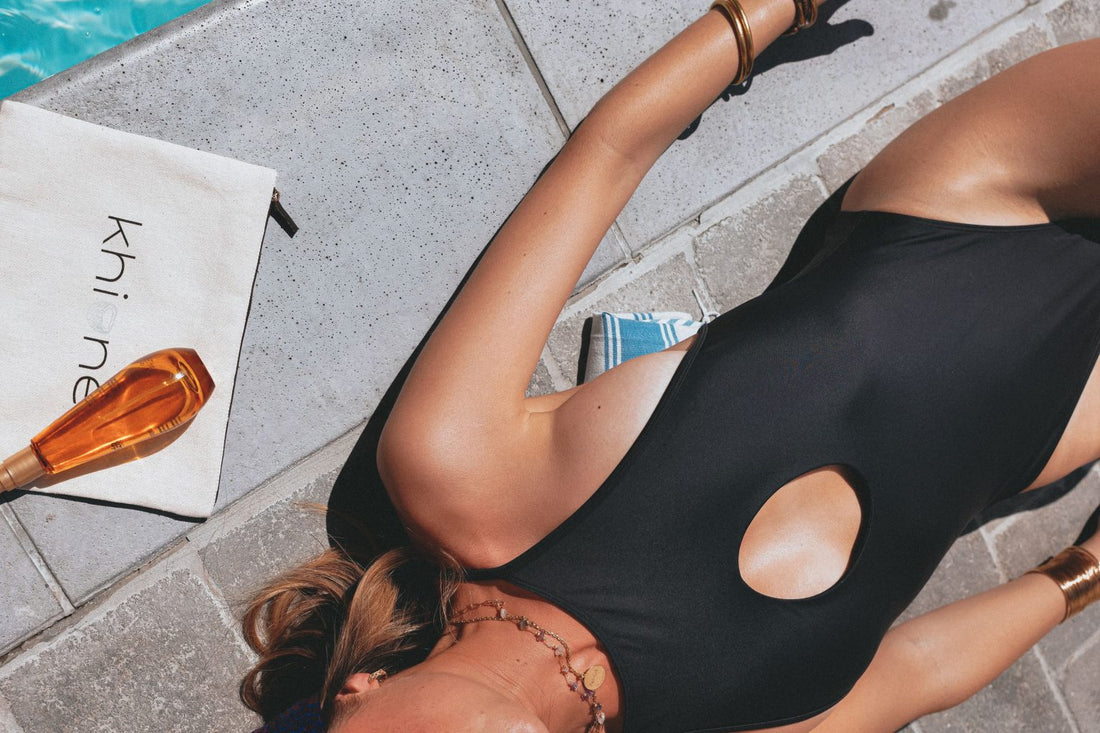
The One-Piece Swimsuit: The Evolution and Modernization of a Timeless Classic
Share
The one-piece swimsuit, once relegated to the status of a "practical" rather than a stylish choice, is now enjoying a resurgence all over the world. Long perceived as a functional garment, it has become a symbol of sophistication and style. How has this swimwear item evolved over the decades to once again become a staple in modern wardrobes? This article takes a look back at its history and the reasons for its renewed popularity, making it a classic that has ultimately never truly left the scene.
Humble Beginnings: Between Modesty and Revolution
The one-piece swimsuit was born at a time when social norms dictated modesty, even when swimming. At the beginning of the 20th century, women wore voluminous outfits made of thick fabrics that covered almost the entire body. It was in 1920 that the one-piece swimsuit truly took off thanks to pioneers such as Australian athlete Annette Kellerman, who popularized the form-fitting and more practical model. She ushered in a new era where women could finally combine comfort with freedom of movement. Her influence marked a turning point, establishing the one-piece swimsuit as a stylish and functional option, heralding the beginning of the evolution towards more modern and flattering designs.
The 50s and 60s: Hollywood glamour and icons
The Golden Age of Hollywood marked a turning point in the history of the one-piece swimsuit. Actresses such as Marilyn Monroe and Esther Williams helped make the one-piece swimsuit a symbol of sensuality. Cuts became more flattering, and designs emphasized the female figure while remaining relatively modest. It was during this era that the swimsuit became a fashion icon, capable of captivating audiences on the big screen as well as on the beach.
The arrival of the bikini and temporary marginalization
With the advent of the bikini in the 1960s and 1970s, the one-piece swimsuit experienced a relative decline. The bikini was seen as daring and liberating, and quickly became the must-have piece for younger, more avant-garde generations. This period was marked by a cultural revolution that celebrated individuality and freedom from traditional norms, and the bikini fit perfectly into this movement. However, the one-piece swimsuit did not disappear altogether. It remains popular with professional swimmers and those seeking greater comfort and support, cementing its place as a practical and stylish choice for aquatic activities and beach wellness.
The 90s Revival: Sport and Minimalism
The 1990s saw the return of the one-piece swimsuit, driven by athletic trends and minimalism. The television series “Baywatch” popularized low-cut one-piece swimsuits and propelled them to the status of cultural icons. This iconic style, embodied by figures like Pamela Anderson, made the one-piece swimsuit a symbol of seduction and self-confidence. The designs of this decade combined comfort, dynamism, and sensuality, and the one-piece swimsuit thus found a new place in fashion, aimed at a more active and daring clientele. This period also marked the beginning of the acceptance of a strong and confident femininity, where the one-piece swimsuit became a statement of style as much as function.
Today: modernity and diversity of styles
Between 2010 and 2020, the one-piece swimsuit experienced a resurgence thanks to changing beauty standards and the rise of social media. Designers competed in ingenuity to modernize this piece by playing with asymmetrical cutouts, innovative fabrics, and details such as laces and gathers. The one-piece swimsuit became a choice for all body types, offering a harmonious blend of coverage and flatterment.

The one-piece swimsuit embodies a simple elegance that appeals to those seeking a timeless look. Exit excesses, the modern one-piece swimsuit focuses on simplicity and fine details, with clean cuts, plunging necklines, and open backs that illustrate the beauty of simplicity. What sets it apart today is its ability to transcend the seaside setting; many women adopt it as a chic bodysuit to wear under a skirt or flowing pants. This versatility makes it easy to transition from a day at the beach to an evening by the sea without changing outfits. This is the charm of this unique piece, which adapts to all situations while adding a touch of sophistication. Technological innovations in the field of textiles have also modernized the one-piece swimsuit. Today's fabrics offer a perfect blend of support, flexibility, and resistance to elements such as chlorine and salt water. Recycled materials are also increasingly popular, addressing consumers' environmental concerns. This is Khiónê's mission . We make it a point to use superior materials, not only to guarantee aesthetic design, but also to ensure durability and comfort. Celebrating body diversity is at the heart of Khiónê's project, which is why we create models designed to enhance each silhouette, from timeless classic cuts to bold and avant-garde designs.
The one-piece swimsuit is no longer just another option; it has become a sought-after and established choice. It embodies both modernity and tradition, combining comfort, aesthetics, and innovation.
